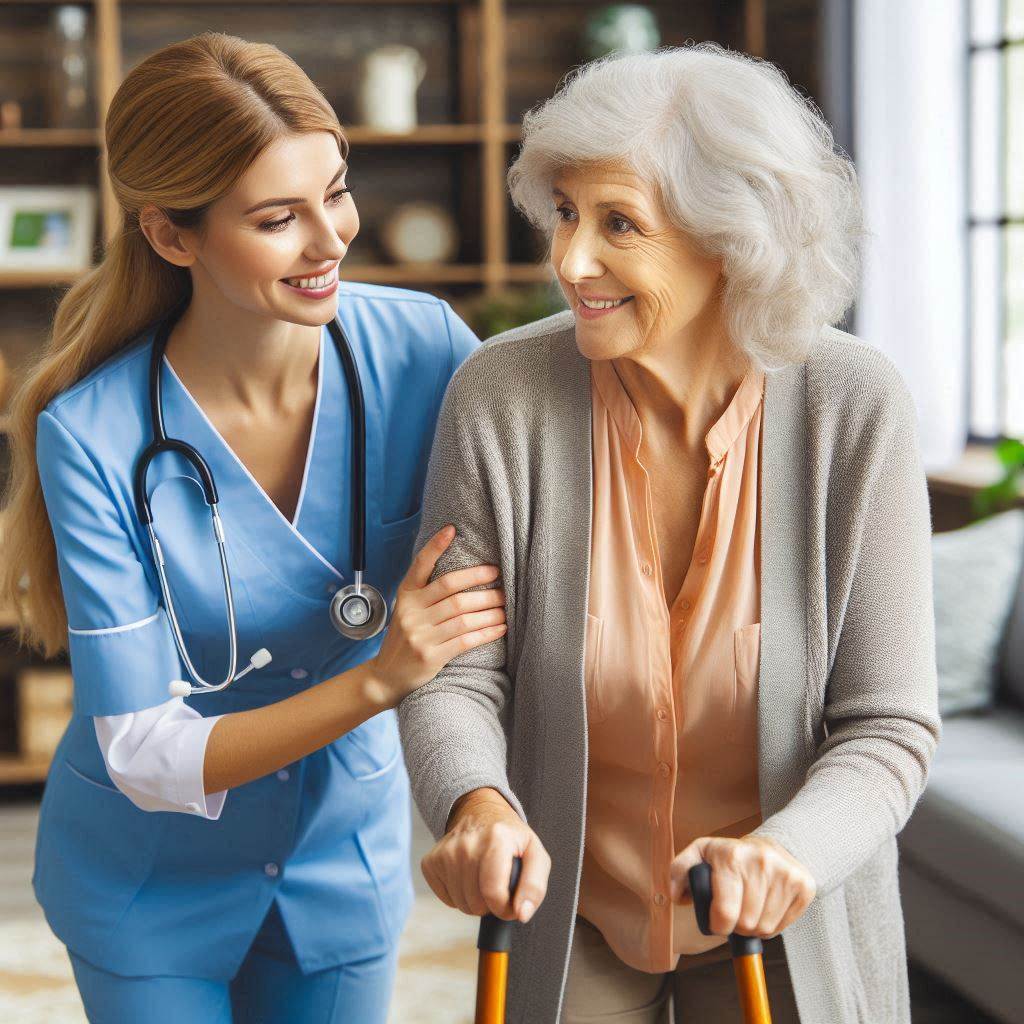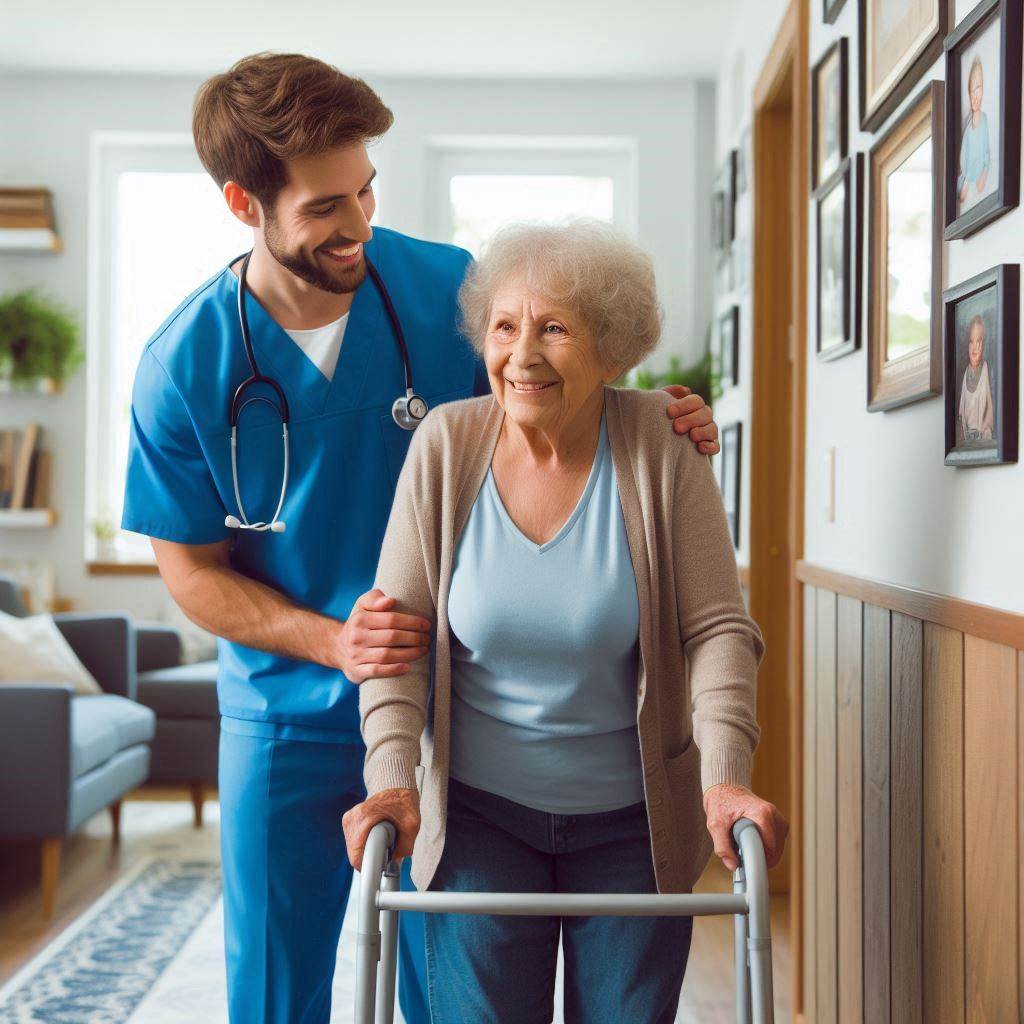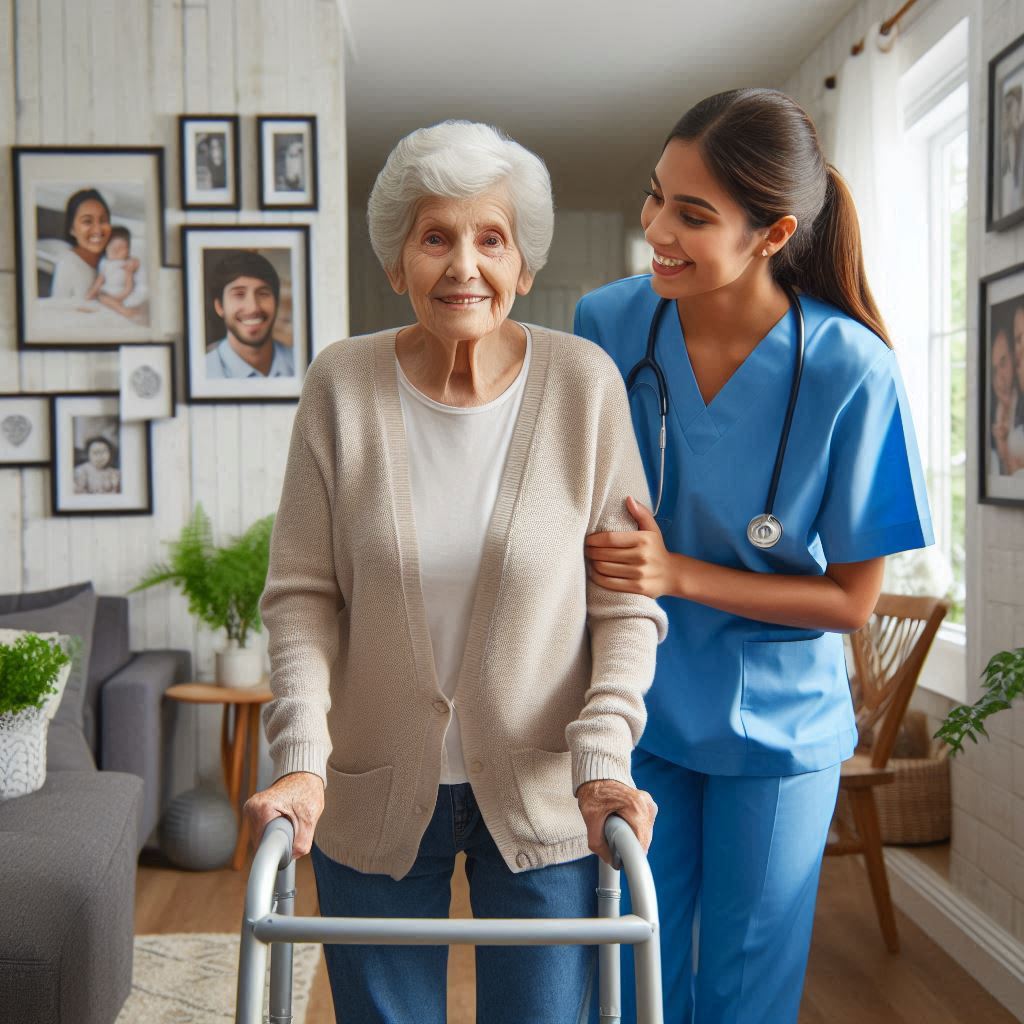sixfifty.com/blog/what-does-it-mean-to-have-a-safe-work-environment/?
Introduction
Home health aide safety is crucial in providing quality care for clients.
Aides work in various environments, often unsupervised, making their safety paramount.
Ensuring the safety of home health aides directly impacts the well-being of clients.
Safe working conditions allow aides to perform their duties effectively, without fear of injury or harm.
Importance of Home Health Aide Safety in Providing Care for Clients
Safety is vital for home health aides to deliver the best care to clients.
Aides often assist with mobility, administer medication, and handle emergencies.
These tasks require a safe environment to prevent accidents.
Safety protocols and training empower aides to perform confidently and efficiently.
When aides feel safe, they can focus entirely on the needs of their clients.
This dedication improves the quality of care and enhances client satisfaction.
Risks and Challenges That Home Health Aides Face in Their Work
Home health aides encounter numerous risks and challenges daily.
They frequently work with clients who have mobility issues, leading to potential falls or injuries.
Handling medications and medical equipment also poses risks.
Aides must be vigilant to avoid exposure to infections and contagious diseases.
Additionally, they often work alone, which can be isolating and stressful.
This isolation can make it harder to get immediate help in emergencies.
The diverse and unpredictable nature of their work environment adds to the complexity and potential hazards they face.
Safety Tips and Best Practices for Home Health Aides
This blog post aims to equip home health aides with essential safety tips and best practices.
By following these guidelines, aides can minimize risks and enhance their safety on the job.
These tips will cover various aspects of their work, from handling equipment to personal health precautions.
Implementing these practices can create a safer working environment and ensure high-quality client care.
Ultimately, these recommendations aim to protect both the aides and their clients, fostering a safer, more supportive care environment.
Understand the Client’s Needs
Familiarize yourself with the client’s medical condition, mobility limitations, and any specific safety concerns
Start by learning about your client’s medical condition.
Know their diagnoses, medications, and any treatments they receive.
This knowledge will help you anticipate potential issues and provide the best care.
Understanding their mobility limitations is crucial for ensuring their safety.
Assess whether they need assistance walking, standing, or performing daily activities.
Identifying specific safety concerns, such as a history of falls or allergies, is essential.
Recognize any triggers that may cause health issues.
Your goal is to create a safe environment tailored to their needs.
This preparation minimizes risks and promotes their well-being.
Communicate with the client and their family members to gather important information about their care needs
Effective communication with the client and their family is key.
Engage in open conversations to gather comprehensive information about their care needs.
Ask the client about their daily routines, preferences, and any discomfort they experience.
Discuss their concerns and listen actively.
Involve family members in these discussions to gain additional insights.
They can provide valuable information about the client’s history, habits, and specific requirements.
Family members may also share observations that the client might overlook.
This collaborative approach ensures you have a well-rounded understanding of the client’s needs.
It also fosters trust and cooperation, making your care more effective.
Adjust your care plan and safety practices accordingly to ensure the client’s well-being
With a thorough understanding of the client’s needs, tailor your care plan to suit them.
Adjust your practices to address their specific safety concerns and health requirements.
For instance, if the client has mobility issues, implement measures to prevent falls.
Ensure the environment is free of obstacles and provide assistive devices if needed.
If they have a medical condition requiring regular monitoring, incorporate those checks into your routine.
Adapt your schedule to include time for medication management, physical therapy, or other necessary treatments.
Always remain vigilant and responsive to any changes in the client’s condition.
Continuous assessment and adjustment of your care plan are vital.
This proactive approach ensures that the client’s well-being is consistently prioritized.
Regularly review and update your strategies to meet their evolving needs.
Document any changes and communicate them with the client and their family.
This transparency keeps everyone informed and involved in the care process.
By following these guidelines, you create a safe and supportive environment for your client.
Your attention to detail and adaptability will enhance their quality of life and provide peace of mind for their family.
Read: Common Challenges Faced by Surgical Technologists
Maintain a Clean and Organized Work Environment
It is essential for home health aides to prioritize cleanliness and organization in the client’s living space.
Keeping the environment clean not only ensures the client’s safety but also contributes to their overall well-being.
One of the primary safety concerns in a home setting is the risk of tripping hazards.
By keeping the living space clutter-free, home health aides can prevent accidents and injuries for both themselves and the client.
Tripping over misplaced items or clutter can result in falls, which can be particularly dangerous for elderly or disabled individuals.
Organize medical supplies and equipment to avoid accidents or contamination
Properly storing medical supplies and equipment is crucial to maintaining a safe work environment.
Home health aides should ensure that medications, medical devices, and other supplies are organized and stored in designated areas.
This not only helps prevent accidents but also minimizes the risk of contamination, ensuring the client’s safety and well-being.
Sanitize surfaces and frequently touched areas to prevent the spread of infections
Regularly sanitizing surfaces and frequently touched areas is another important aspect of maintaining a clean and safe environment.
Home health aides should follow proper sanitation protocols to prevent the spread of infections, especially in households with vulnerable individuals.
This practice helps protect both the client and the caregiver from illnesses and contributes to a healthier living environment.
Overall, maintaining a clean and organized work environment is a fundamental aspect of providing safe and effective care as a home health aide.
By prioritizing cleanliness, organization, and proper sanitation practices, caregivers can create a safe and comfortable living space for their clients, promoting their health and well-being.
Read: Preparing for a Sonography Job Interview: Tips
Practice Proper Body Mechanics
When working as a home health aide, it is crucial to prioritize safety at all times.
One of the key aspects of ensuring safety is practicing proper body mechanics.
Here are some important tips to keep in mind:
Use proper lifting techniques
- Always bend at the knees and use your legs to lift, rather than your back.
- Keep the object or client close to your body to reduce strain on your muscles.
- Avoid sudden movements and take your time when lifting to prevent injuries.
Avoid awkward positions
- Do not twist your body when lifting or assisting clients with mobility issues.
- Ensure that your workspace is set up in a way that allows for easy movement and minimal strain.
- If you need to reach for something, make sure to move your entire body instead of just your arms or back.
Utilize assistive devices
- When lifting heavy objects or clients, consider using tools such as a belt or assistive devices like a transfer belt.
- If you feel that the task at hand is too strenuous, do not hesitate to ask for help from a colleague or another caregiver.
- Remember that it is always better to ask for assistance than to risk injuring yourself or the client.
By following these tips and incorporating proper body mechanics into your daily routine as a home health aide, you can minimize the risk of injury and ensure a safe working environment for both yourself and your clients.
Remember, safety should always be your top priority!
Read: Advancement Opportunities for Surgical Technologists

Prevent the Spread of Infections
Wash Your Hands Frequently and Use Hand Sanitizer Before and After Interacting with Clients
Hand hygiene is the cornerstone of infection prevention.
Home health aides must wash their hands frequently and use hand sanitizer before and after interacting with clients.
This practice significantly reduces the risk of transmitting harmful pathogens.
Use soap and water to wash hands for at least 20 seconds, ensuring thorough coverage.
Hand sanitizers with at least 60% alcohol can be used when soap and water are unavailable.
Proper hand hygiene prevents the spread of infections, protecting both the client and the caregiver.
Wear Personal Protective Equipment, Such as Gloves and Masks, When Providing Direct Care
Wearing personal protective equipment (PPE) is essential for home health aides to prevent infections.
Gloves, masks, and sometimes gowns or face shields create barriers that reduce the risk of exposure to infectious agents.
Gloves should be worn during any direct contact with clients, especially when handling bodily fluids or open wounds.
Masks protect against respiratory droplets that may carry viruses or bacteria.
Ensure PPE fits properly and is used correctly to maximize protection.
Proper use of PPE helps maintain a safe environment for both the client and the caregiver.
Properly Dispose of Medical Waste and Follow Infection Control Protocols to Prevent Cross-Contamination
Proper disposal of medical waste is crucial to infection control in home healthcare settings.
Items like used gloves, masks, dressings, and other contaminated materials should be disposed of in designated medical waste containers.
These containers should be puncture-resistant and clearly labeled.
Follow infection control protocols strictly to prevent cross-contamination.
Clean and disinfect surfaces regularly, especially those frequently touched.
By adhering to these protocols, home health aides can significantly reduce the risk of spreading infections.
Ensuring proper waste disposal and adhering to infection control measures protect everyone involved.
Following these guidelines helps maintain a safe and healthy environment for clients and caregivers.
Hand hygiene, proper use of PPE, and correct disposal of medical waste are vital practices.
They form the foundation of effective infection prevention strategies in home healthcare.
Consistent adherence to these practices not only protects clients but also safeguards the health of caregivers.
It fosters a trusting and safe care environment, which is essential for effective home healthcare services.
By implementing these safety tips, home health aides contribute to the overall well-being of their clients and themselves.
Read: Work Environment for Surgical Technologists: Hospitals vs. Clinics
Transform Your Career Today
Unlock a personalized career strategy that drives real results. Get tailored advice and a roadmap designed just for you.
Start NowImplement Fall Prevention Strategies
Assess the Client’s Home for Fall Hazards and Make Necessary Modifications
Begin by thoroughly assessing the client‘s home for potential fall hazards.
Check for loose rugs, cluttered walkways, and poor lighting.
These common issues can easily cause trips and falls.
Installing grab bars in the bathroom and near the bed provides additional support for the client.
Non-slip mats in the shower and on the bathroom floor can prevent dangerous slips.
Ensure that the client‘s home is well-lit, particularly in hallways and staircases, to reduce the risk of falls.
Small modifications like these can create a safer environment and significantly reduce the likelihood of accidents.
Encourage the Client to Use Mobility Aids, Such as Walkers or Canes, to Prevent Falls
Encouraging clients to use mobility aids can be a crucial step in fall prevention.
Walkers and canes provide the necessary support and stability, especially for clients with balance issues or weakened muscles.
Educate the client on the proper use of these aids to maximize their effectiveness.
Demonstrate how to use the aids correctly and practice with the client until they feel confident.
Regularly check the condition of the mobility aids to ensure they are in good working order.
The consistent use of these tools can greatly reduce the risk of falls and help maintain the client‘s independence.
Stay Alert and Attentive to the Client’s Movements to Intervene Quickly if They Show Signs of Losing Balance
Remaining vigilant and attentive to the client‘s movements is essential for fall prevention.
Pay close attention to how the client moves around their home.
Watch for signs of unsteadiness, such as wobbling or frequent stumbling.
Be ready to offer support if they show any signs of losing balance.
Position yourself in a way that allows you to quickly intervene if needed.
Communicate with the client about their comfort level and any difficulties they may be experiencing.
Your awareness and quick response can prevent a fall and ensure the client‘s safety.
Regularly engaging with the client about their mobility can also help identify any changes in their condition that may require further intervention.
Implementing these fall prevention strategies is vital for the safety of home health aide clients.
By assessing the home environment, encouraging the use of mobility aids, and staying attentive to the client‘s movements, home health aides can create a safer living space and significantly reduce the risk of falls.
These best practices not only protect the client from injury but also promote their confidence and independence in their daily activities.
Fall prevention requires continuous effort and vigilance, but the positive impact on the client‘s well-being makes it a fundamental aspect of home health care.
Find Out More: Top Conferences for Medical Coding Professionals
Communicate Effectively with the Client and their Care Team
Establish open and clear communication with the client to address any safety concerns or changes in their health status
Effective communication is crucial for ensuring the safety and well-being of home health clients.
Start by establishing a rapport with your client.
Make them feel comfortable sharing their concerns and health updates.
Encourage them to speak openly about any discomfort, pain, or changes in their condition.
This transparency helps you address potential issues promptly, preventing minor problems from escalating into serious health risks.
Regularly ask about their well-being and any specific needs they might have.
This proactive approach fosters trust and allows you to identify and mitigate safety concerns swiftly.
Coordinate with other members of the client’s care team, such as nurses or therapists, to ensure a comprehensive care plan
Home health aides often work alongside a team of healthcare professionals, including nurses, therapists, and doctors.
Coordination with these team members is essential for providing comprehensive care.
Regularly update the care team about the client’s status and any observed changes in their health.
Participate in care team meetings or case conferences to discuss the client’s progress and adjust care plans as needed.
This collaborative approach ensures that all team members are on the same page, providing a cohesive and effective care strategy.
By working together, you can address safety concerns more efficiently and provide holistic care that meets the client’s needs.
Document any safety incidents or concerns in the client’s care log for future reference and follow-up
Accurate documentation is a key aspect of maintaining client safety.
Keep a detailed care log that includes any safety incidents, concerns, or changes in the client’s condition.
Documenting these events provides a clear record that can be reviewed by other healthcare team members.
This practice ensures that everyone involved in the client’s care is informed about their current health status and any potential risks.
Additionally, a well-maintained care log allows for better follow-up and continuity of care.
It helps identify patterns or recurring issues that may require further investigation or intervention.
By keeping thorough records, you contribute to a safer and more effective care environment for your client.
In fact, effective communication with your client and their care team, along with diligent documentation, are essential components of providing safe and comprehensive home health care.
Establishing open dialogue, coordinating with healthcare professionals, and maintaining detailed records all contribute to identifying and addressing safety concerns promptly.
These best practices not only enhance the quality of care but also build trust and ensure the well-being of the client.
By implementing these strategies, home health aides can play a vital role in creating a safe and supportive environment for those they care for.
Stay Educated and Updated on Best Practices
Attend Training Sessions or Workshops on Home Health Aide Safety and Best Practices
Home health aides must prioritize attending training sessions or workshops.
These events provide vital information on safety and best practices in home health care.
By participating in these training programs, home health aides gain valuable skills and knowledge that enhance their ability to perform their duties safely and effectively.
These sessions often cover topics such as patient handling techniques, infection control measures, and emergency response protocols.
Regular attendance at training sessions ensures that home health aides are up-to-date with the latest safety standards and best practices.
This ongoing education is crucial for maintaining a high level of competence and ensuring the well-being of both the aides and their patients.
Stay Informed About New Developments in Healthcare Technology or Safety Guidelines
Staying informed about new developments in healthcare technology and safety guidelines is essential for home health aides.
Advances in medical technology can significantly improve patient care and safety.
Home health aides should regularly read medical journals, attend webinars, and subscribe to newsletters from reputable health organizations.
This continuous learning helps them stay abreast of new tools and techniques that can enhance their practice.
Additionally, updated safety guidelines from health authorities ensure that home health aides are following the most current protocols, which is vital for patient safety.
Being knowledgeable about the latest developments allows home health aides to provide the best possible care and maintain a safe working environment.
Seek Feedback from Supervisors or Colleagues to Improve Your Safety Practices and Professional Skills
Seeking feedback from supervisors or colleagues is a valuable practice for home health aides.
Constructive feedback helps identify areas for improvement in safety practices and professional skills.
Engaging in regular discussions with supervisors and peers allows home health aides to gain different perspectives on their work.
This collaborative approach fosters a culture of continuous improvement and learning.
By actively seeking feedback, home health aides can address any weaknesses in their practice and develop strategies to enhance their performance.
This proactive approach not only improves the quality of care provided but also contributes to a safer work environment for both aides and patients.
In a nutshell, staying educated and updated on best practices is essential for home health aides.
Attending training sessions, staying informed about new developments, and seeking feedback from supervisors and colleagues are key strategies for maintaining high safety standards and professional competence.
Home health aides who prioritize ongoing education and self-improvement are better equipped to provide safe, effective, and compassionate care to their patients.
Conclusion
Recap the Importance of Home Health Aide Safety in Providing Quality Care for Clients
Home health aide safety is crucial in delivering quality care to clients.
Ensuring safety prevents accidents and injuries, which can jeopardize both the aide and the client.
By adhering to safety protocols, home health aides can create a secure environment.
This not only protects physical health but also fosters trust and reliability.
Clients feel more comfortable and secure, knowing their caregivers prioritize safety.
Effective safety measures enhance the overall caregiving experience, ensuring clients receive the best possible care.
Thus, maintaining safety is essential for both client well-being and the aide‘s professional integrity.
Emphasize the Role of Prevention, Communication, and Continuous Education in Maintaining a Safe Work Environment
Prevention is a cornerstone of safety for home health aides.
Implementing proactive measures can significantly reduce the risk of accidents.
Regularly assessing the client’s home for potential hazards helps in mitigating risks.
Communication is equally vital.
Clear and open dialogue with clients and their families about safety concerns ensures everyone is on the same page.
Continuous education and training keep home health aides updated on the latest safety protocols and best practices.
Staying informed about new techniques and equipment improves safety and efficiency.
These elements together create a safer and more productive work environment for home health aides.
Encourage Home Health Aides to Prioritize Their Own Safety and Well-Being While Caring for Others
Home health aides must prioritize their own safety and well-being.
Self-care is essential in a demanding caregiving role.
By taking care of themselves, aides can better care for their clients.
Proper body mechanics when lifting or moving clients prevent injuries.
Wearing appropriate personal protective equipment shields against potential infections.
Mental health is equally important.
Regular breaks and managing stress through healthy coping mechanisms are crucial.
Seeking support from colleagues and supervisors when needed ensures a balanced approach to caregiving.
Prioritizing their own safety allows home health aides to provide consistent, high-quality care without compromising their health.
In closing, home health aide safety is fundamental in providing quality care.
Prevention, communication, and continuous education play key roles in maintaining a safe environment.
By prioritizing their own safety and well-being, home health aides can effectively care for others.




